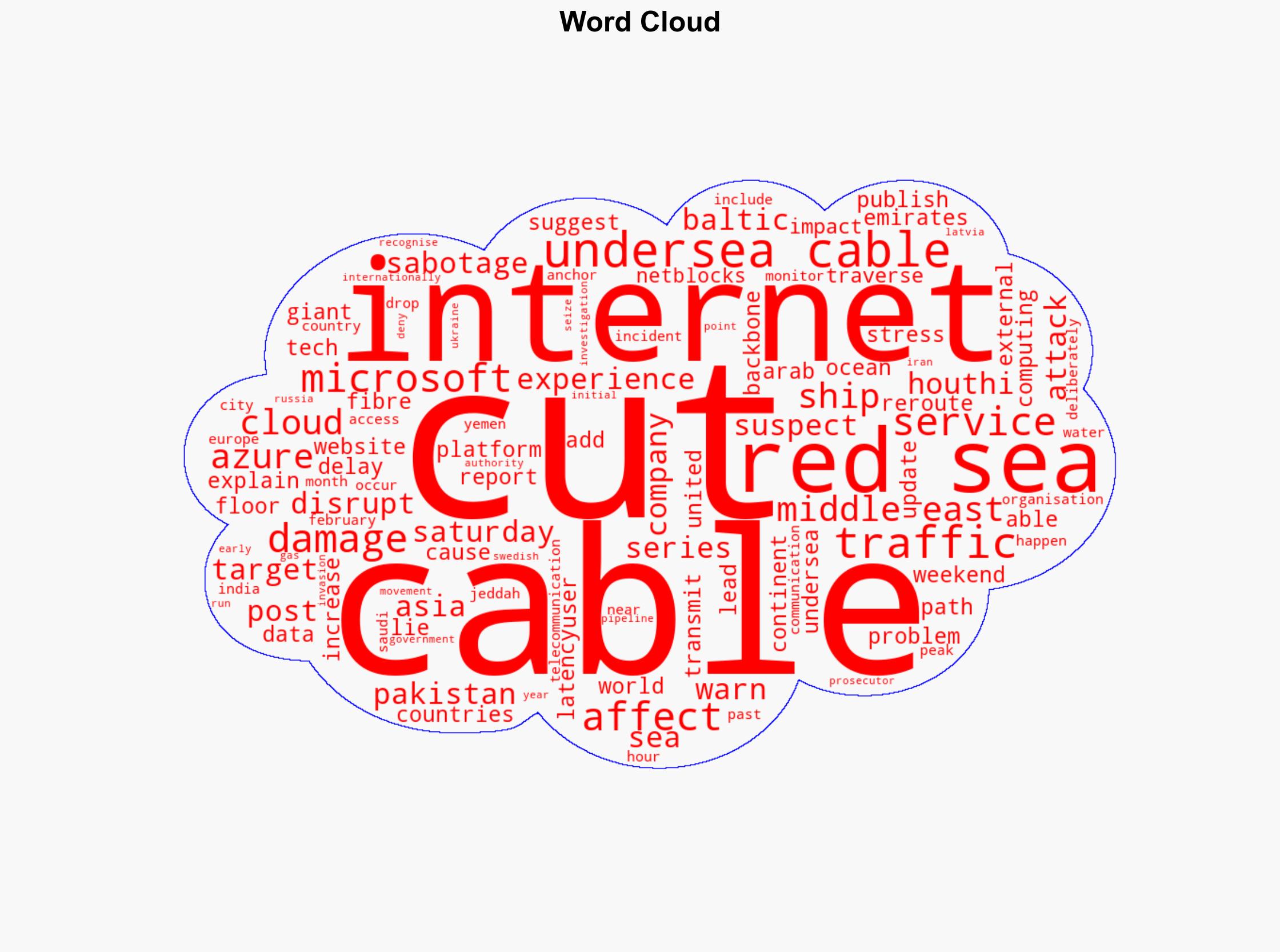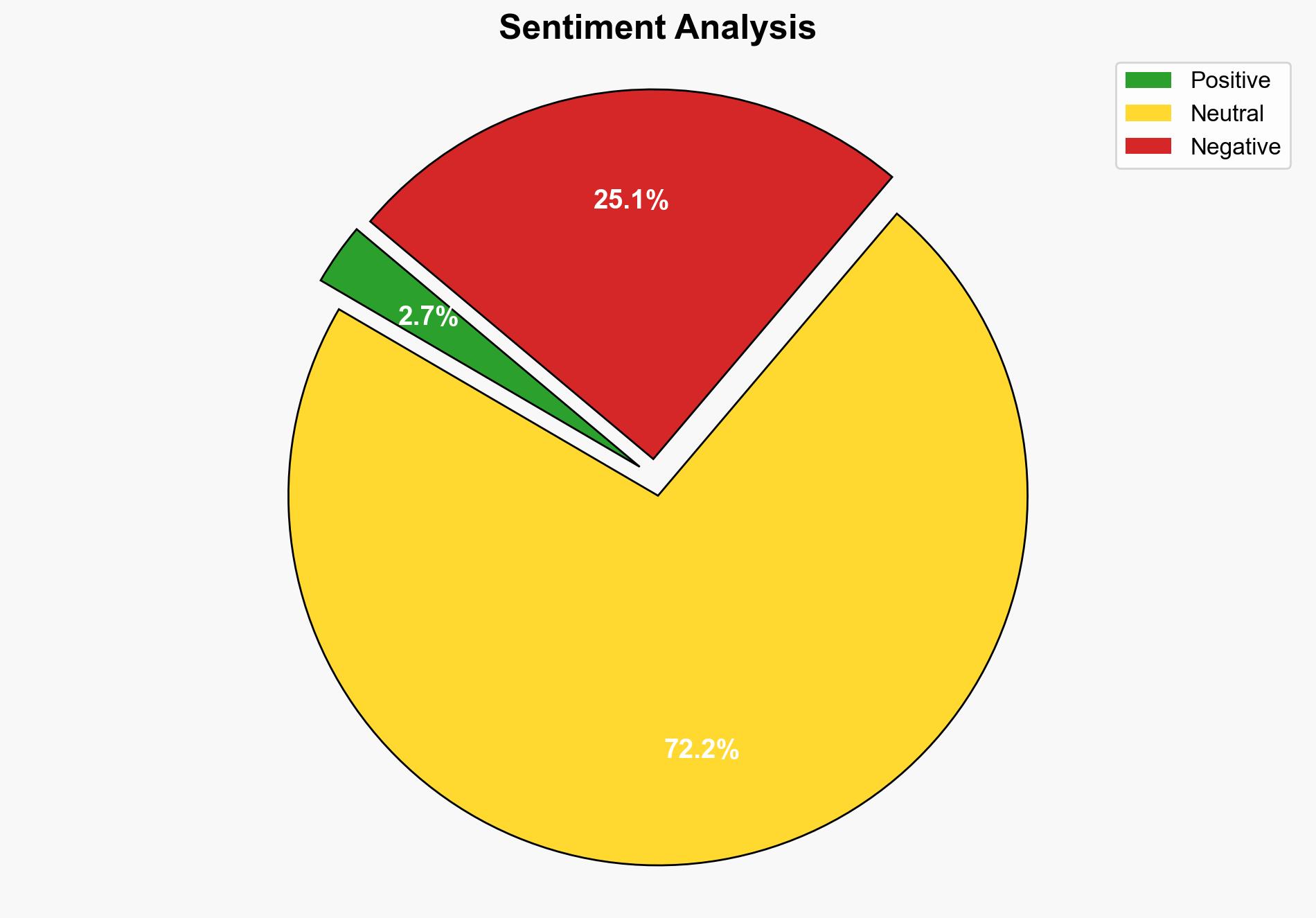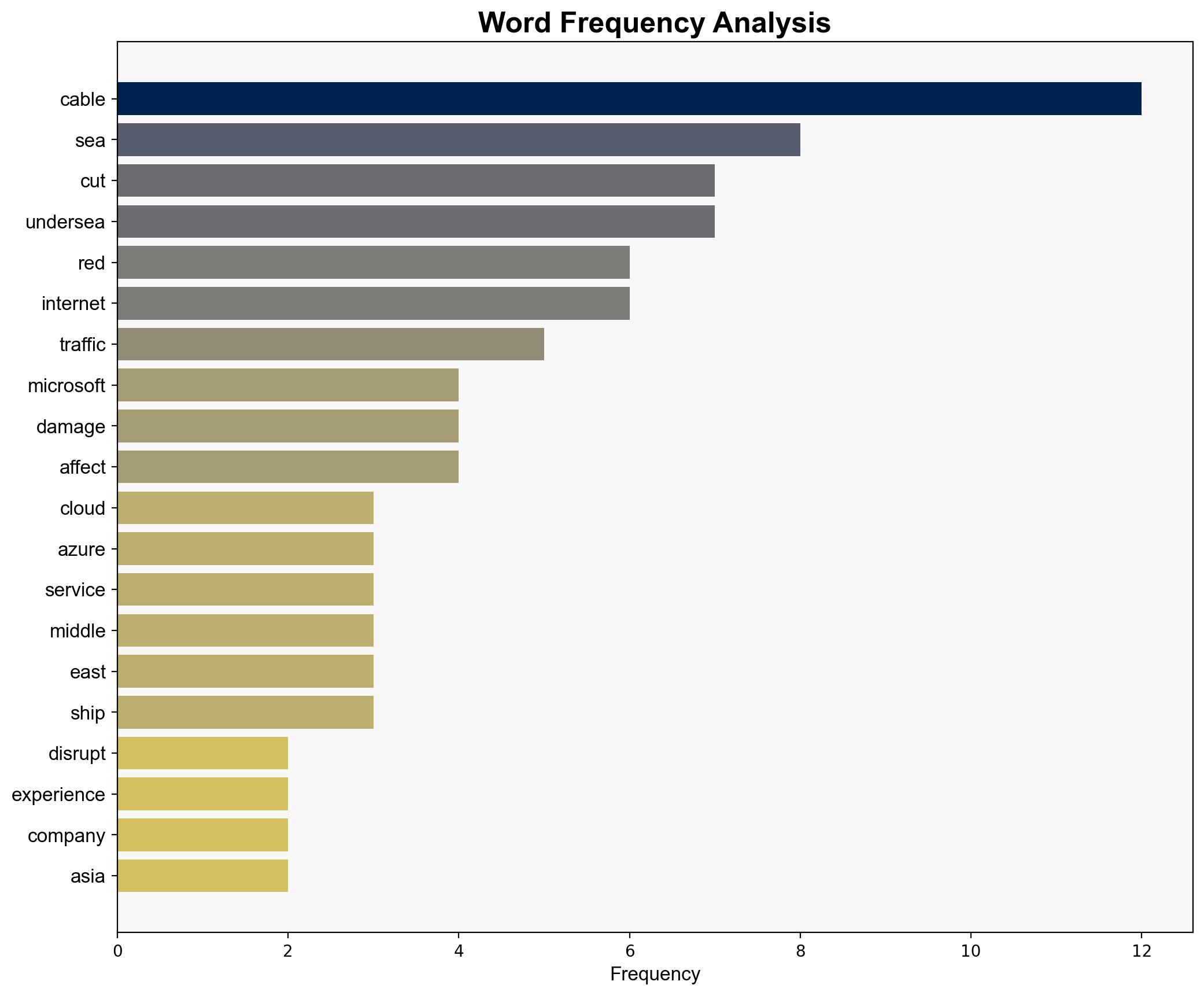Microsoft Azure services disrupted by Red Sea cable cuts – BBC News
Published on: 2025-09-07
Intelligence Report: Microsoft Azure services disrupted by Red Sea cable cuts – BBC News
1. BLUF (Bottom Line Up Front)
The most supported hypothesis is that the undersea cable cuts in the Red Sea were likely accidental, potentially caused by maritime activities such as anchor drops. However, the possibility of deliberate sabotage cannot be entirely dismissed, given the geopolitical tensions in the region. Confidence level: Moderate. Recommended action: Enhance monitoring and protection of critical undersea infrastructure, and engage in diplomatic efforts to reduce regional tensions.
2. Competing Hypotheses
1. **Accidental Damage Hypothesis**: The cable cuts were accidental, caused by maritime activities such as anchor drops or fishing operations. This is supported by historical precedents where similar incidents have occurred due to non-malicious activities.
2. **Deliberate Sabotage Hypothesis**: The cable cuts were a result of deliberate sabotage, possibly by state or non-state actors with interests in disrupting regional communications. This is suggested by the geopolitical context and past incidents of deliberate cable damage.
Structured Analytic Technique: **Analysis of Competing Hypotheses (ACH 2.0)** was used to weigh evidence for each hypothesis. The accidental damage hypothesis is better supported due to the lack of direct evidence pointing to sabotage and the commonality of accidental cable damage.
3. Key Assumptions and Red Flags
– **Assumptions**: The accidental hypothesis assumes normal maritime operations in the Red Sea and no intent to harm. The sabotage hypothesis assumes a motive and capability by actors to disrupt communications.
– **Red Flags**: The absence of direct evidence for sabotage and the reliance on historical patterns for the accidental hypothesis. The geopolitical tension in the region could bias interpretations towards sabotage.
– **Blind Spots**: Potential underreporting or misreporting of maritime activities and lack of real-time monitoring data.
4. Implications and Strategic Risks
– **Economic Impact**: Disruption of cloud services can have significant economic repercussions for businesses relying on Microsoft Azure.
– **Cybersecurity Threats**: Increased latency and rerouting could expose data to interception or cyberattacks.
– **Geopolitical Tensions**: If perceived as sabotage, this could escalate tensions in the region, particularly involving countries like Iran and Saudi Arabia.
– **Psychological Impact**: Continued disruptions could erode trust in the security of undersea communications infrastructure.
5. Recommendations and Outlook
- **Enhance Monitoring**: Invest in real-time monitoring systems for undersea cables to quickly detect and respond to disruptions.
- **Diplomatic Engagement**: Work with regional partners to reduce tensions and establish protocols for protecting critical infrastructure.
- **Scenario Projections**:
– **Best Case**: Improved monitoring and cooperation lead to reduced incidents and enhanced security.
– **Worst Case**: Continued disruptions lead to significant economic losses and heightened geopolitical tensions.
– **Most Likely**: Increased monitoring mitigates accidental damage, but geopolitical tensions persist.
6. Key Individuals and Entities
– Microsoft (as the affected entity)
– NetBlocks (monitoring organization)
– Regional governments and maritime authorities
7. Thematic Tags
national security threats, cybersecurity, counter-terrorism, regional focus





